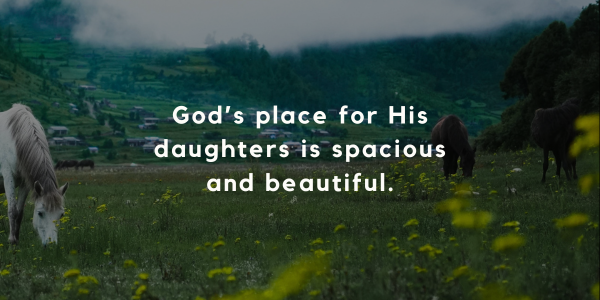Glimpsing God’s Invisible Qualities
- reallyadmin
- Oct 14
- 4 min read
What happens when you take time to “consider the birds”? Jennifer Grant accompanies us on a nature discovery.
Elisa

Glimpsing God’s Invisible Qualities
By Jennifer Grant
Travel back in time with me: it’s the summer of 2019, and I’m visiting a nature center with one of my daughters and a niece. My child is 19, my niece 11-years-old.
My daughter adores her younger cousin; so, despite only tepid interest in this outing she has opted in for the day. She wears short-shorts, a polo shirt, and a nose-ring. On the cusp of a cross-country move to college, her attention is focused very much elsewhere. She hurries through the building, often tapping away on her phone. She’s polite, but not present.
Her cousin, meanwhile, the middle schooler, is both deeply focused and humming with excitement. She holds the laminated “butterfly and bird species” guide, studying it as though it’s a sacred text. Wearing an oversized t-shirt and leggings, strands of her honey-colored hair escape her headband. As we move through the greenhouse, she reaches up and lightly clasps my hand.
That gesture—expressed so comfortably and instinctively—makes me miss having younger children and tangles my emotions, momentarily, into knots. All of mine are teenagers, and, unsurprisingly, I’m not enjoying the awkward growth spurts and regressions, eye-rolling, or the awareness that they are on the verge of leaving home.
We exit the building to walk along a boardwalk, and speakers attached to the railing invite us to listen to bird songs. My niece runs up and down the fence, pressing buttons. We laugh at the comical sounds—drumming, squeaking, trilling, squawking—that she’s able to produce.
“Okay, you guys,” my daughter calls, her voice suddenly playful. “If you were a bird, what sound would you make?”
The three of us erupt into song, clicking, whistling, and slapping our palms on the fence. For the rest of the afternoon, my daughter seems like she's made a return to her younger self. Her phone disappears. She invents more silly games. She leans into me affectionately as we stop to examine a strange Snout butterfly. Its elongated mouth and crumpled-looking brown wings bring to mind leaves on the ground, late in the fall.
I discover again, for perhaps the hundredth time and certainly not for the last, that being immersed in nature is a tonic for the soul. It washes away my worries and leaves me feeling calmed. It fills me up, spiritually, bringing me closer to my true self.
Driving home, I wonder: What is it about moving from childhood into adolescence that makes us stop being curious about the natural world? Is it because, developmentally, it’s appropriate to be more interested in what’s in the mirror or who we are becoming than in what we can see out the window? Must all of our attention during that time go to achieving, as psychoanalyst Erik Erikson described it, “a sense of identity?”
And is that why, in midlife, so many of us discover a renewed—and even stronger—passion for nature than we had as kids? We start identifying as “avid birdwatchers” or “plant people” and take countless pictures of wildflowers. We’re less interested in what we look like or how others see us. We begin to relax and accept what it is we have to offer the world. We stop to listen to the melodic, two-parted whistle of a cardinal. We pick up pinecones and feathers from the ground. We marvel, looking up at the night sky. And none of these things point us toward a truth about ourselves or reflect some element of our own lived experience, but instead we’re directed to the mystery and beauty of something completely other.
The Apostle Paul wrote, “since the creation of the world God’s invisible qualities…have been clearly seen, being understood from what has been made” (Romans 1:20). Maybe, after we’ve navigated the choppy seas of growing up and helping our kids do the same, we begin reconnecting spiritually by looking at nature. We learn something about God by observing tiny painted spots on butterfly wings, hearing the mysterious and jarring call of a bird, and recognizing the variety and the fragility of an ecosystem.
Now, more than six years later, my niece is approaching young adulthood and my daughter is leaving it. And that daughter, who those years ago, initially rushed through the nature center is a full-fledged (pun intended!) bird lover. She and I visit a bird sanctuary when she is in town. We walk the paths slowly, silently, looking up into the trees, and she often reaches out to hold my hand. And I am filled with a sense of quiet gratitude.

Jennifer Grant is a nature lover and the author of many books for adults and children, including Dimming the Day: Evening Meditations for Quiet Wonder and Finding Calm in Nature. Her latest for children is “The Consider Series.” The first volume, Consider the Birds (based on Matthew 6:26) is out now. More at jennifergrant.com.






Comments